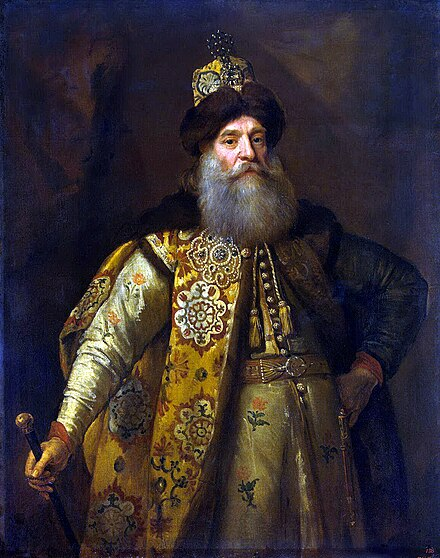Civic Orchestra of Victoria - 16 March
Hi, friends!
I'm back again to tell you about a concert I'm playing next weekend with the Civic Orchestra of Victoria.
This one is with a guest conductor who spent decades of his career as a violinist in Norway - serving as the concertmaster of the Bergen Philharmonic, to be precise - and the concert starts with a few Norwegian favorites, before moving on to music from other parts of Europe.
Here's what we're playing for you:
Johan Halvorsen — Triumphal Entry of the Boyars
There's a whole genre of classical music that is basically "marches of groups of important dudes who probably had cool outfits on", and this is a canonical example of that. According to Wikipedia, a Boyar is an Eastern European feudal noble, and here's a painting of one of them:

that's a lot of embroidery Okay, so imagine a whole parade of these guys, on horseback, and you're watching from the sidewalk as they go by. Sometimes I imagine the Shriners in their tiny cars instead, but it's probably better if you don't.
Edvard Grieg — Norwegian Airs, Opus 63, No. 1
The first in a set of two melodies, this is a lovely and slightly somber strings-only piece.
Edvard Grieg — Peer Gynt Suite No. 1
You have definitely heard every movement in this as a soundtrack to cartoons. Picture a sunrise in a cartoon - great! There's a 50 percent chance that you heard the first movement in your head. Originally written as incidental music for a play, it follows the adventure of our hero from waking up with a terrible hangover, to mourning a death, to dodging an attempted seduction, all the way to fleeing a troll king who lives in a mountain. This one is famous for a reason- because it's so evocative and tells a great story.
Maurice Ravel — Pavane for a Dead Princess
A Pavane is a slow courtly dance from 16th century Spain, and Ravel wrote this one not with any particular princess in mind, but as a look back to when princesses dancing Pavanes in the Spanish court was a thing. My favorite thing about Ravel is the way that he uses the different sounds of the instruments to fit what's going on in the music, and I really enjoy the delicate textures in this.
Manuel de Falla — Three Cornered Hat
This is some of the music that de Falla wrote for the ballet, The Three Cornered Hat, which premiered in 1919. De Falla was a Spanish composer and he used Spanish music and dances in this work. It starts with a block party; people are hanging out and having drinks and snacks with their neighbors. But there is also a bureaucrat here, in his three cornered hat, and we know from history that guys in three cornered hats are total jerks. Anyway, this bureaucrat starts hitting on the miller's wife, who is not welcoming this attention. The miller is angry! And it turns out that the miller is a flamenco dancer! The second movement starts with the miller making an angry statement and the bureaucrat bloviating - but then the miller cuts him off and makes his opinion known by dancing a fierce farruca. The third movement is a dance-off between these two guys, and it ends with the bureaucrat being bundled up in a blanket by all the neighbors and thrown out of the party. I love a happy ending.
There are lots of challenging rhythms in here and there's so much going on all the time! This piece is especially fun for me to play because the second violins get a lot of loud, insistent flamenco rhythms in the third movement.
This concert is on Saturday, March 16th at 2pm, at the Dave Dunnet Community Theatre. You can get more information and tickets here.
As always, thanks for listening!